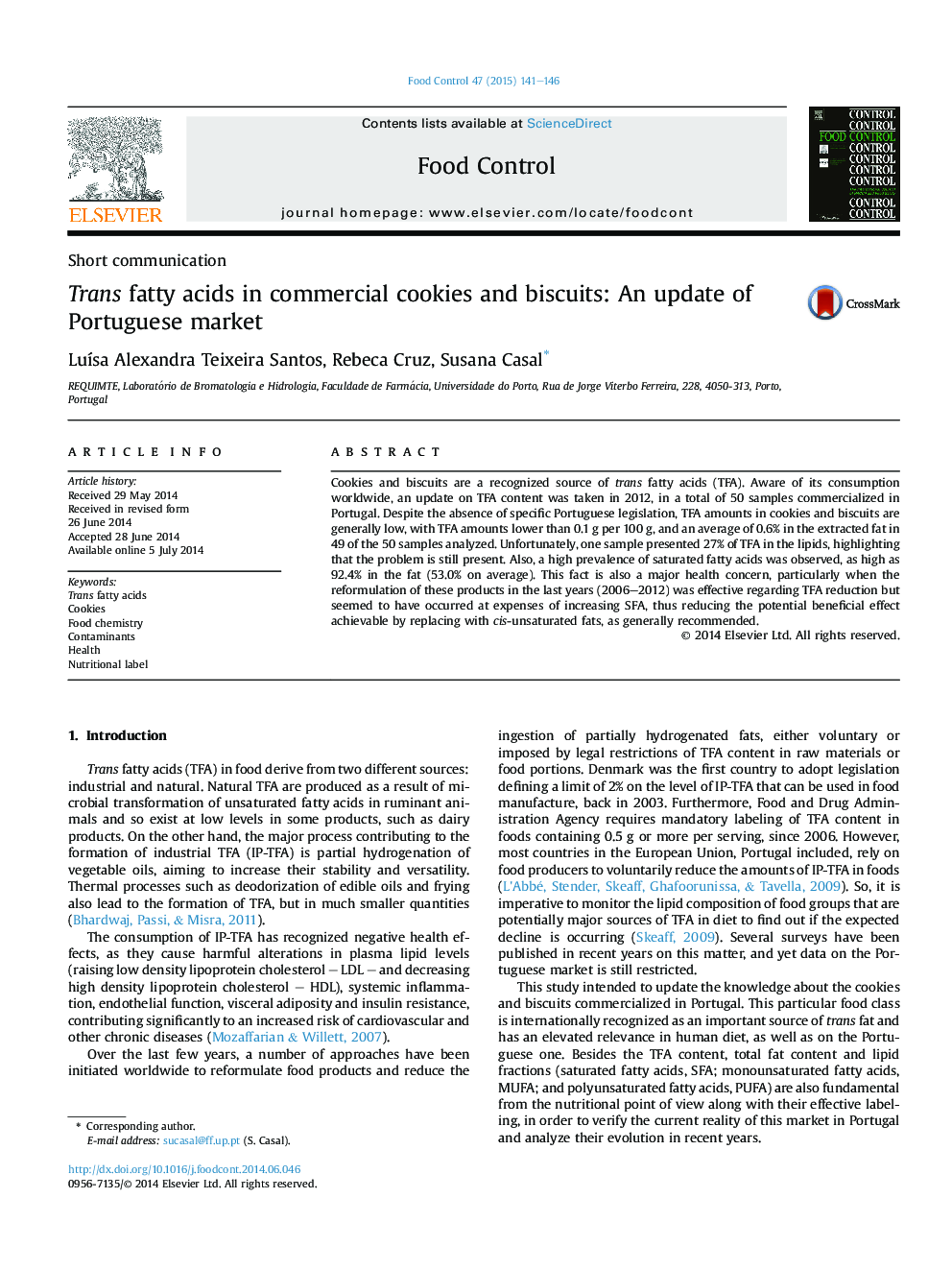| Article ID | Journal | Published Year | Pages | File Type |
|---|---|---|---|---|
| 6391349 | Food Control | 2015 | 6 Pages |
â¢Updating survey on trans fatty acids composition in cookies sold in Portugal.â¢Low levels of trans fatty acids are currently found, leaning towards to a reduction.â¢As a replacement of trans fatty acids, saturated fat has increased.â¢Inaccurate ingredients list designations might induce incorrect choices.
Cookies and biscuits are a recognized source of trans fatty acids (TFA). Aware of its consumption worldwide, an update on TFA content was taken in 2012, in a total of 50 samples commercialized in Portugal. Despite the absence of specific Portuguese legislation, TFA amounts in cookies and biscuits are generally low, with TFA amounts lower than 0.1Â g per 100Â g, and an average of 0.6% in the extracted fat in 49 of the 50 samples analyzed. Unfortunately, one sample presented 27% of TFA in the lipids, highlighting that the problem is still present. Also, a high prevalence of saturated fatty acids was observed, as high as 92.4% in the fat (53.0% on average). This fact is also a major health concern, particularly when the reformulation of these products in the last years (2006-2012) was effective regarding TFA reduction but seemed to have occurred at expenses of increasing SFA, thus reducing the potential beneficial effect achievable by replacing with cis-unsaturated fats, as generally recommended.
